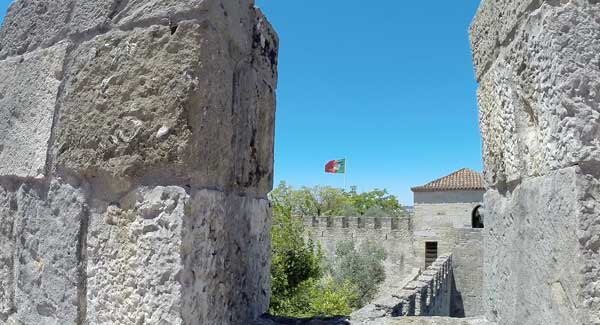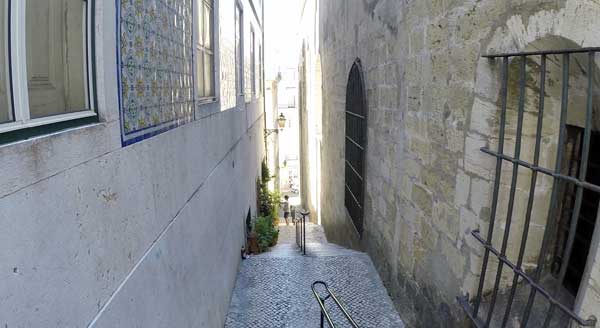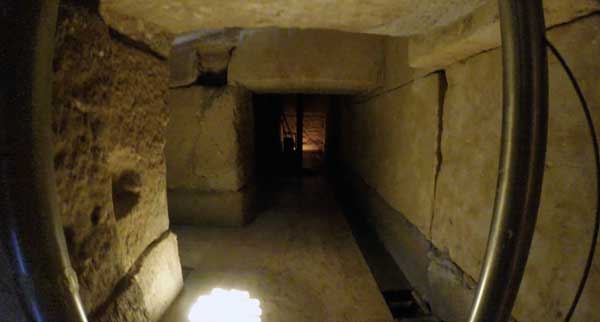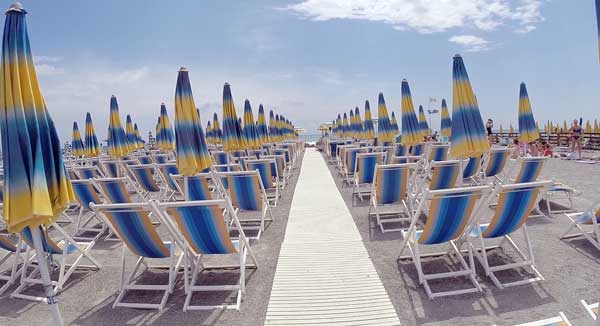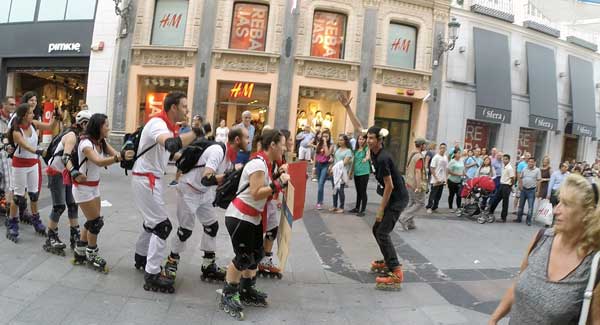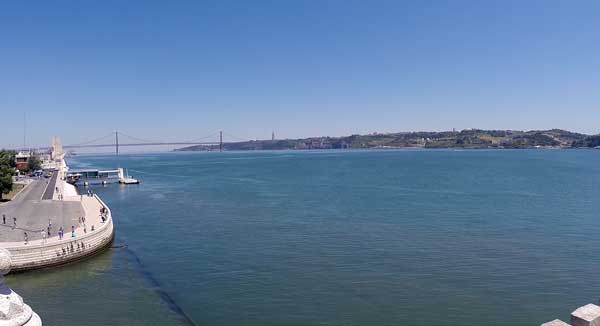If you have built castles in the air, your work need not be lost; that is where they should be. Now put the foundations under them.
— Walden, by Henry David Thoreau.
And Now for Something…
I’m on walkabout.
I realize that for most people that word may be a bit nebulous—probably equivalent, information-wise, to me saying something like, “I’m calculating a p-value,” so I wanted to share my definition of walkabout, especially in case it might inspire you to go on one as well.
While I first heard the term walkabout used on Babylon 5 (Season 3, Episode 18), it was Dr. Carey Priebe, my PhD advisor, who inspired my journey down this rabbit hole. Once or twice a year I’d get an email from him saying something like, “I’m going on walkabout, returning anon.” And that would be that—until he returned he’d be out of contact. Gone. No advisor for the poor grad student.
And yet, these mysterious disappearances, and the resulting twinkle in his eye when he returned, left me intrigued.
Follow the White Rabbit
From piecing together stories whispered by the other grad students, when he disappeared on walkabout he’d usually just grab his favorite walking stick and a jar of peanut butter, and then hike along the Appalachian Trail in leather moccasins handmade by his wife. In addition to the Appalachian Trail, rumors suggested that he also went on walkabouts in other regions in the world, always alone, including out into the Australian bush.
As for the length of these trips, “anon” seemed to vary. I observed no discernible pattern to how long he stayed out in the wild. Being a statistician, one might say that he would go on walkabout for N days, where N was bounded on the lower end by 3 days. It was never clear what was the upper limit to the duration of his walkabouts—I suspect this parameter was highly dependent on the size of his jar of peanut butter.
When he returned from these trips it was as if he had just returned from some Wonderland—he seemed almost younger, mentally refreshed, ready to tackle vexing research problems, and anxious to launch new projects. These walkabouts produced a therapeutic, regenerative effect on his bearing and abilities, and so I too became enamored of the white rabbit.
The Therapeutic Break
I know my advisor did not invent the walkabout. Babylon 5 aside, the Internet offers folklore suggesting that Australian Aborigines went on a journey in the wild during adolescence as a right of passage into adulthood. Other stories suggest that folks are inspired to go on walkabout at random, whenever the need/whim strikes—disappearing without notice and for varying lengths of time.
Therapeutic retreats in general are also not new, but the structure and benefits of them reinforce the case for walkabout. Bill Gates, for example, regularly embarked on “Think Weeks”—one week twice a year he would seclude himself from his family and business in order to read stacks of books and research papers, as well as think about life, innovation, and research at the 50,000 foot level.
A Think Week thought can give the green light to a new technology that millions of people will use or send Microsoft into new markets.
Stefan Sagmeister is a designer in New York who, every seven years, closes down his studio for one year to pursue various experiments and to think about the future—one year every seven years is 12.5% of his time. Speaking of the benefits that came out of his first self-sabbatical,
And that actually, specifically as a starting point of the first sabbatical, worked really well for me. What came out of it? I really got close to design again. I had fun. Financially, seen over the long term, it was actually successful. Because of the improved quality, we could ask for higher prices. And probably most importantly, basically everything we’ve done in the seven years following the first sabbatical came out of the thinking of that one single year.
— “The Power of Time Off”, by Stefan Sagmeister.
Though in some respects an extreme form of walkabout, Rolph Potts, in Vagabonding, espouses the nomadic life of long-term travel as a source of personal freedom. He also stresses the importance of preparation and working hard prior to the trip in order to be able to benefit from the extended travel period away from mundane life.
And perhaps the iconic retreat from day-to-day routine is Henry David Thoreau’s transcendental immersion into nature over the course of two years, two months, and two days while living in a hut he built himself, as documented in the book Walden.
But periodic breaks from normal routine are not just for the individual. In fact, these ritualized tangents have been institutionalized in academia in the form of sabbaticals, where professors may divorce themselves from their everyday university responsibilities for a certain period of time, often up to one year, in order to pursue growth and development research opportunities. The business world too has recognized the value of imaginative excursions for the purpose of fostering creativity, innovation, and well-being. As just one example, Google lets their employees spend 20% of their time at work on personal projects.
On Activity
The mental break from routine is one element of the walkabout. The second element is physical activity, e.g., walking.
We’ve always heard, anecdotally, that we should exercise. But researchers are now helping to motivate and quantify exactly why we should be more active.
From surveying published research results, as noted in Brain Rules, by John Medina,
Exercisers outperform couch potatoes in long-term memory, reasoning, attention, and problem-solving tasks,
and
One of the greatest predictors of successful aging, they found, is the presence or absence of a sedentary lifestyle,
and
All of the evidence points in one direction: Physical activity is cognitive candy.
Walkabout is different from meditation or from a “Think Week” divorced from physical activity. Rather than sitting and emptying the mind, or sitting while trying to fill the mind, the point of walkabout is to increase neural stimulation through mental work in addition to some sort of physical activity, over an extended duration. By engaging the body, the mind is engaged as well, and its potential is increased.
So if you are not currently active, walking on while on walkabout can be the gateway to a longer, healthier, and happier life. If you are currently active, continue doing so on walkabout while also exercising the mind can lead to many benefits.
My Favorite Day
If one advances confidently in the direction of his dreams, and endeavors to live the life which he has imagined, he will meet with a success unexpected in common hours. He will put some things behind, will pass an invisible boundary; new, universal, and more liberal laws will begin to establish themselves around and within him.
— Walden, by Henry David Thoreau.
So, what am I doing on my walkabout? To an outside observer, I am on vacation, touring the countries of the Old World—clambering along castle walls, drinking espresso on the side of cobblestone streets, and hiking through forests dark and wise. But inside, on my walkabout, I’m taking advantage of the change of scenery and pace to plan upcoming projects, consider interesting research topics, outline articles and stories, think about opportunities, and write notes to my once and future self.
In other words, I’m healing, refocusing, planning, building, and dreaming.
“What day is it?”, asked Winnie the Pooh.
“It’s today,” squeaked Piglet.
“My favorite day,” said Pooh.
— The Complete Tales of Winnie-the-Pooh, by A. A. Milne.
Yes, today is my favorite day because I am on walkabout, laying the foundation for an even better tomorrow.
So now you know what I’m up to, and perhaps one day you’ll follow the white rabbit on walkabout as well.
